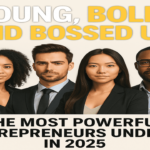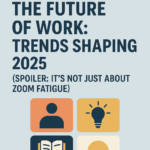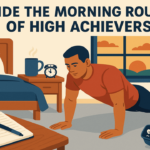Wondering about what a tariff is in economics? A tariff is taxation levied on goods (imports and exports) by the government of a country or a supranational union.
Tariffs are a type of market premium that completely or partially monetizes a set of values in a specific market.
The attractiveness of the American market-place, for example, is owed in great part to its evolved consumerist impulses, which are themselves an offshoot of the level of freedom granted to us by a constitution based on personal choice. We cannot, therefore, undercut the value of all of this by permitting other countries to bring their goods into the country without regard for the fact that the country has one of, if not the world’s, most appealing consumer markets.
Of course, the true challenge is to come up with a mechanism that allows tariffs to be implemented in a way that reflects the desirability of each market.
This system is within our capabilities to create. However, as long as tariffs are viewed solely as a means of protection and trade stifling, there is little possibility that this will ever happen.
One option is to have market-driven tariffs, in which corporations bid to pay a particular amount of duties on items being exported into another country within a certain range. If the market is as wealthy and appealing as the US consumer market, corporations may feel it is advantageous to pay a higher rate in order to maximize revenues. Of course, this is a simplified approach, but the fundamental concept is to use a market mechanism to price some highly important economic intangibles and then use that price to determine the value of those intangibles.
What is a tariff in economics?
A tariff is a levy imposed on an imported commodity.
Tariffs are one of the first forms of trade policy, dating back to at least the 18th century. Historically, the primary goal of a tariff has been to increase income. The primary goal of a tariff these days is to safeguard specific home industries from the international competition while also raising money.
The impact of a tariff is determined by the size of the levying country, not in terms of size, but in terms of the potency of its commerce and ability to influence global prices.
A large country can benefit from a tariff in some instances has led some to argue that larger countries should apply optimal tariffs against their trading partners when necessary.
The difference between the terms of trade gain and the efficiency loss is minimized maximized by an optimal tariff. The difficulty with strategic tariffs is that, in addition to being typically unlawful, they are rarely administered in isolation. Trade partners who are enraged are likely to retaliate with tariffs or other trade policy instruments of their own.
Types of tariff
A government can use a variety of tariffs and barriers, including:
- Specific tariffs
- Ad valorem tariffs
- Licenses
- Import quotas
- Voluntary export restraints
- Local content requirements
Specific tariffs
A particular tariff is a one-time levy levied on one unit of an imported commodity. This tax is subject to change depending on the type of products imported. A country may, for example, levy a $15 tariff on each pair of shoes imported but a $300 duty on each computer imported.
Ad valorem tariffs
The term ‘ad valorem’ comes from the Latin word ‘according to value’, and it refers to a tax that is levied on a product based on a proportion of its worth. A 15% tariff imposed by Japan on U.S automobiles is an example of an ad valorem tariff. The 15% rise is based on the vehicle’s worth, thus a $10,000 vehicle now costs $11,500 to Japanese buyers. This price hike protects domestic companies from undercutting, but it also artificially raises prices for Japanese automobile buyers.
Licence
A licence is a government-issued permit that authorises a company to import a specific type of product into the country. Imported cheese, for example, maybe restricted, with licences provided to certain companies allowing them to serve as importers. As a result, competition is restricted, and consumer prices are raised.
Import quotas
An import quota is a limit on the amount of a specific product that can be imported. The issue of permits is frequently related to this type of obstacle. For example, a country may impose a quota on the amount of citrus fruit that can be imported.
Voluntary export restraints
Export restraints on a voluntary basis (VER) is a voluntary trade barrier because it is erected by the exporting country rather than the importing one. The importing country normally imposes a voluntary export restraint (VER), which may be complemented by a reciprocal VER. For example, in response to a request from Canada, Brazil could impose a VER on sugar exports to Canada. Canada might then impose a VER on coal and sugar while safeguarding domestic industry.
Local content requirement
Rather than imposing a quota on the number of goods that can be imported, the government can mandate that a specific percentage of a product be created in the United States. A proportion of the good itself or a percentage of the good’s worth can be used as a restriction. For example, a restriction on the import of computers could state that 25% of the components used to create the computer must be made in the United States, or that 15% of the value of the commodity must originate from domestically produced components.
Benefits of tariffs
Tariff benefits are distributed unevenly. Because a tariff is a tax, once imports reach the domestic market, the government will see an increase in revenue. Because import prices are artificially inflated, domestic sectors gain from less competition.
Higher import prices, however, entail higher pricing for goods for customers, both individual consumers and corporations. Individual consumers pay more for steel-based products, and businesses pay more for steel used to manufacture goods if the price of steel rises owing to tariffs. In a nutshell, tariffs, and trade barriers favour producers over consumers.
Tariffs and trade barriers have varying effects on firms, consumers, and the government throughout time. Higher costs for commodities can restrict consumption by individuals and businesses in the short term. Some firms will profit during this time, while the government will experience an increase in revenue from duties.
In the long run, these enterprises may experience a loss of efficiency as a result of a lack of competition, as well as a decrease in earnings as a result of the appearance of substitutes for their products. The long-term effect of subsidies on the government is an increase in demand for public services, as higher prices, particularly in food, leave less disposable cash.
Purpose of tariffs
Tariffs have been used by governments throughout history for a variety of reasons.
- Tariffs have historically aided governments in both protecting domestic sectors from international competition and earning income.
- Tariffs are still the most common instrument used by countries in trade wars today. If the countries involved are large enough, tariffs could be used to exert significant pressure on one another, resulting in trade or other concessions.
- By raising the cost of imported goods, governments might encourage individuals to purchase goods made in their own country (producers that might not be able to compete otherwise). It is a strategy for governments to strengthen their home economies while lowering their trade imbalance.
- In practice, it is a lot more difficult. In the short term, rising prices can reduce GDP by making goods and services more expensive for consumers. Due to a lack of competition, protected industries may become less efficient and inventive in the long run.
- Tariffs are often opposed by proponents of more liberalised or free trade, who believe that fewer trade barriers benefit all parties by keeping prices low and allowing international commerce to flow freely.
- Tariff retaliation can be devastating to industries that rely on exports or have intricate supply networks that are reliant on international trade.
Feed-in tariffs
With ever-increasing oil and gas prices, as well as the consequences of greenhouse gases hastening global warming, countries all over the world have understood the importance of implementing ecologically responsible energy policies. Many nations are currently pushing and putting non-polluting renewable energy supplies into practice. Feed-in tariffs are one such energy program.
A feed-in tariff is a fee that consumers and companies pay for electricity generated from renewable energy sources such as solar, hydro, and wind turbines and returned to the grid. The tariff’s goal is to encourage people to use more renewable and clean energy sources. A power company will purchase electricity generated from renewable energy sources at government-set tariffs. Different governments have different tax rates. More than 40 countries currently have feed-in tariff legislation for renewable energy.
Benefits of feed-in tariff
There are many benefits of using feed-in tariff programs. For any electricity produced, there is a guaranteed rate payment. Any electricity transferred onto the electricity system also has a guaranteed price.
Feed-in tariff systems also encourage the development and use of renewable energy sources, reducing reliance on oil and other polluting energy sources. Green gases are being emitted in lower quantities in the atmosphere, reducing the impact of climate change.
It also helps a community in securing its own energy source, such as when homes and businesses are powered by hydro, solar, or wind.
It also helps to improve global and domestic security by reducing reliance on unfriendly oil-producing countries.
Moving to renewable and ecologically friendly energy sources will also assist in the development of a new green industry, which will result in the creation of millions of jobs.
In addition, there are more technology-driven breakthroughs that benefit everyone. A boost to the economy is desperately needed in these challenging economic times. The amount of money you can save is determined by how much power you generate and how you use it in your house or business. For example, you can save a lot of money by reducing your electricity consumption during the day.
How Feed-In Tariffs Drive Green Energy Adoption
With more countries using the feed-in tariff scheme, it has shown to be an effective green energy program. Feed-in tariffs are being adopted by a number of major countries including Canada, the United States, Australia, Germany, Denmark, and Spain. Despite the fact that the criteria and measures employed in the programs vary, they all have a good influence on energy conservation, greenhouse gas emissions reduction, and increased usage of renewable energy sources.
Feed-in tariffs have been linked to an increase in the production and usage of solar and wind energy. With so much worry about the status of the earth and its natural resources, additional feed-in tariffs systems are projected to spring up in a variety of countries around the world. It will play a critical role in mitigating climate change and making the world a healthier and better place to live.
How the feed-in tariff works in the UK
Anyone can apply for funds to promote carbon-free or low-carbon electricity use. Businesses, individuals, and community groups in the United Kingdom can benefit from the feed-in tariff scheme.
In their own backyards, they can now have their own renewable energy source. Electricity generating equipment such as wind, hydro, solar photovoltaic, and anaerobic digestion are examples of renewable energy. These items should be kept to a maximum of 5MW.
Previously, no funds were given to businesses for such installations. However, they can now benefit from it as well. To maximise your return, different system sizes might be implemented. The development cost of a 2MW turbine, for example, would be comparable to the approval cost of a 100KW turbine.
Tariffs are paid at the applicable rate for the year of installation to give an indication of financial returns. The retail pricing index is used to calculate this. This means you will be reimbursed for the first year’s tariff in the second year. Anyone thinking about taking this path should do so right now to ensure they obtain a good return on their investment.
Another way to think about how the feed-in tariff scheme works is that energy providers compensate businesses and families that generate their own electricity using renewable resources.
There is a payment for the electricity produced, as well as a payment for any electricity exported to the grid. There would be a huge saving in your monthly payment if you used microgeneration technology. If you had to take out a loan to complete the installation, you must make payments to the lending company. Feed-in tariff payments will exceed your monthly loan repayment. That is if one took out the loan for 25 years.
Private health insurance and tariff calculator
Price comparisons are available for practically any product or service, making it simple to save a lot of money.
Potential savings in this area are enormous: A tariff calculator online can locate a tariff that is hundreds of dollars less expensive than your present one. However, you should not base your insurance decision solely on the results of an online tariff calculator.
This is due to the fact that most health insurance tariff comparison websites only look at current monthly expenses. However, in most circumstances, deciding on a firm and tariff is a long-term commitment. Few consumers wish to move providers frequently, and many people’s health prohibits them from switching to a more appealing rate.
Most organisations change the insurance contributions their consumers must pay each year. Different tariff contributions grow by different amounts.
Some businesses begin new tariffs with extremely low contributions that soon rise. The cheapest health insurance plan could soon become one of the most costly.
As a result, the current price is merely a partial picture in time. That is why it is critical to examine not only current medical insurance contributions but also predicted increases.
Why Expert Guidance Trumps Online Health Insurance Calculators
Online tariff calculators do not provide information regarding previous and future contributions revisions, as well as hidden co-payments. You’ll need health insurance experts with a lot of experience for this. These professionals are familiar with insurance firms, their structure, tariffs, and other information. They can provide much more than online tariff calculators, such as actual predictions of contribution changes.
Of course, it’s critical to examine not only the cost of private health insurance but also the benefits. There are significant variances between insurance firms, as well as in their tariffs and the specific customization possibilities within each tariff.
Using online calculators to compare medical insurance options is insufficient because they only consider current monthly contributions, not predicted increases, hidden co-payments, and other critical factors that should be considered. Individual guidance and consultation with independent experts are the only ways to make a well-informed conclusion.
Maximize Solar Panel Savings with the UK Feed-In Tariff
Solar panels, typically made from silicon, efficiently capture and store solar energy. In the UK, the Feed-In Tariff (FIT) has motivated many to install solar PV systems. Through the FIT program, the government pays you for the energy you generate, even if it’s solely for your home or business.
The FIT is a government subsidy that offsets the high costs of installing and maintaining renewable energy systems. This incentive encourages people to choose renewable energy, despite fossil fuels often being cheaper.
By installing a solar panel system, you can take advantage of the FIT and enjoy the best rates for your energy production.
Other renewable energy systems, like wind turbines and anaerobic digestion, also benefit from the tariff but earn less than solar-powered systems.
Most residential solar PV systems benefit from the generation tariff, which pays a small amount for each kilowatt-hour produced. This rate varies depending on the system’s size and energy output. A solar PV system generating between 10 and 50 kilowatts is the most profitable, earning 32.9 pence per kilowatt-hour.
Larger systems produce more energy overall but earn less per kilowatt-hour. For instance, a system generating between 150 and 250 kilowatts only earns 15 pence per kilowatt-hour. However, larger systems may benefit more from the export tariff, which pays for every kilowatt-hour exported to the grid. Only systems producing less than five megawatts are eligible for the FIT.
Wind turbines also enjoy good rates, with systems producing 1.5 kilowatts or less earning 36.2 pence per kilowatt-hour. Solar PV systems earn FIT payments for 25 years, while wind systems benefit for 20 years.
Although tariffs and timeframes differ, all renewable energy users benefit. You generate energy for free, earn tax-free income, and help reduce fossil fuel consumption.
Conclusion
Governments impose tariffs to boost revenue, protect local businesses, or influence foreign policies. However, tariffs can lead to unintended consequences, like higher prices for consumers. It’s important not to overlook the cultural factors that make some markets thrive while others struggle. Blaming tariffs as the main cause of economic disparity misses the broader purpose of trade regulations.












